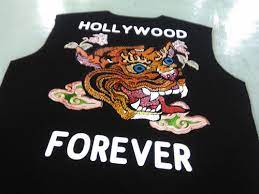DTG printing technology is one of the latest printing methods developed with the help of the latest printing technology. In many ways, it works like the inkjet printers you see in offices that transfer ink directly to paper. Of course, in this case a different type of ink is used and the medium is fabric rather than paper.
DTG offers many advantages over other printing methods, including:
Low setup costs: Setting up a DTG printer requires uploading a design and then it's ready for use. This differs from other, more time-consuming methods that require templates and other tools to be made before printing can begin.
Ease of use: Other printing methods include creating templates, cutting shapes into vinyl, or drawing designs on special paper. These tasks often require skills that many people do not possess. However, with a DTG shirt printer, you just upload your design, insert your t-shirt, and you're good to go.
No minimum order: Low setup costs make minimum orders unnecessary. If you want, you can even ask for it to be used to print color photos on T-shirts and other fabrics.
HIGH QUALITY PRINTS: DTG printing technology can print complex multi-color designs with impressive accuracy. It's so accurate and detailed that you can even use it to print color photos onto T-shirts and other fabrics.
More environmentally friendly: Compared with methods such as dye sublimation and screen printing, the DTG printing process is more environmentally friendly. New technologies developed for DTG are also increasingly environmentally friendly.
Improved technology: Unlike most other printing methods, some of which are thousands of years old, DTG printing technology is new. Therefore, as the technology develops further, we can expect to see improvements in results. In addition to better print quality, further developments may also lead to lower costs.
No method is perfect, and DTG printing does have some drawbacks. These disadvantages include:
Pre-treatment of dark-colored fabrics: Dark-colored garments require pre-treatment before printing. Pretreatment works like applying a primer to drywall, preventing the ink from immediately sinking into the fabric to prevent mixing. However, the pre-treatment process can sometimes leave stains on the fabric that can be washed away.
Colors on Dark Fabrics Are Not So Bright: When printing on dark fabrics, the colors typically won`t be as vibrant as they are on light fabrics. In some cases, this may result in rethinking the design or using lighter-colored fabrics. It's also difficult to match the exact Pantone color, leading to mixed results.
Needs a high cotton content: You usually need to use fabrics with a high cotton content to get good results. A cotton content of 80% or more is generally recommended. Fortunately, this is usually not a problem with T-shirt printing since most T-shirts have a high cotton content.
Not the best choice for large orders: While digital direct printing is great for small orders, it is not the best choice for large orders. On the one hand, using a DTG shirt printer for high-volume printing is very time-consuming and may require a lot of manpower. On the other hand, cost makes digital direct printing not cost-effective for high-volume orders.
Cost: Compared to some other methods, DTG shirt printers are not cheap. The cost of entry is high enough to put many businesses off.

